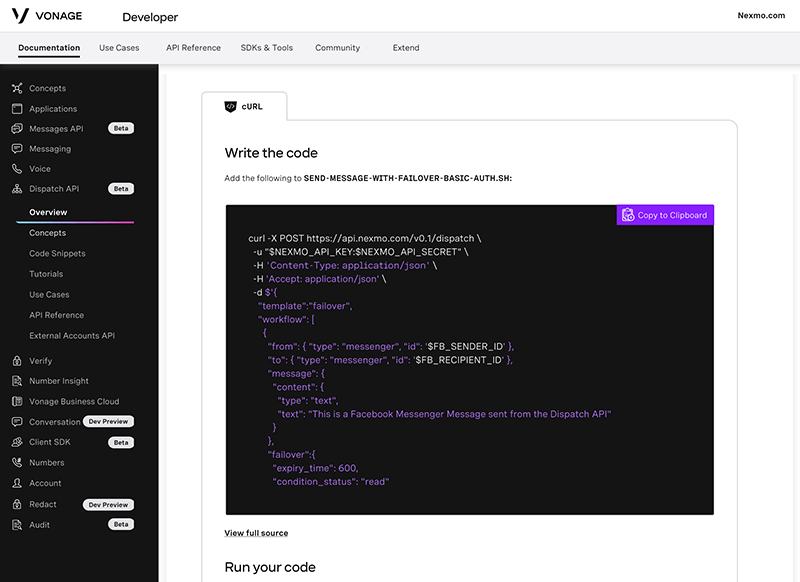Voice broadcast
Broadcast marketing and other messages to customers via outbound phone calls with optional IVR feedback. Engaging a large audience efficiently and cost-effectively.Engage more reliably
A ringing phone is hard to ignore, so using a voice call to notify audience members about new deals or new events increases the likelihood of engagement. You can use a simple IVR application to capture individual responses and feedback.Improve ROI
Voice broadcast campaigns deliver a greater ROI than print media campaigns because of a much higher level of personalisation and engagement.How voice broadcast works
Your application calls
Your application calls a list of phone numbers from a database. If you have provisioned local numbers from Vonage APIs, your call recipients will see local numbers as the caller ID, regardless of the location from which you initiated the call.
Call recipients hear your message
Individuals answer the phone and hear a pre-recorded or text-to-speech message. Text-to-speech messages can also include information that has been personalised for each recipient. If no one answers, or if we detect that voicemail has answered, your application can retry the call or leave a voice message (depending on your business logic).
Call recipients can respond
If you request feedback, individuals can respond to an IVR menu or record an audio response.
You can run reports
You can gain actionable insights by generating reports about your campaigns from our dashboard or your own application using Vonage Management APIs.
Programmable elements used in this solution
Why choose Vonage APIs for voice broadcast?
Engage locally to reach recipients
Using our Number Provisioning API, you can associate local phone numbers with your campaigns. We only provide high-quality voice connections that pass calling line identification (CLI) information, so you can present users with a recognisable local identity, which increases the likelihood that calls will be answered. You can also deliver text-to-speech messages in the local language for each market, with 23 languages supported.Reduce costs
With true per-second billing in most countries, you pay only for the time you use. Compared to traditional per-minute billing you could save more than 50%, depending on your calling patterns and destinations. In addition, you save long distance fees because all calls are local in their respective markets.Increase engagement and feedback
Using the Vonage Voice API, you can capture responses from the recipient using a simple IVR menu. You can also enable users to record an audio response to your campaign.Real time interaction
Because Vonage APIs can interact with your application in real time, you can optimise your business rules to respond in a dynamic manner. For example, when Vonage APIs detect that voicemail or an answering machine has answered the call, it informs your app in real time so that your business rules can determine whether to retry or leave a message.Dynamic optimisation
You can run A/B comparison tests to optimise campaigns automatically based on, for example, which voice gender or accent performs better in each market.Related solutions
